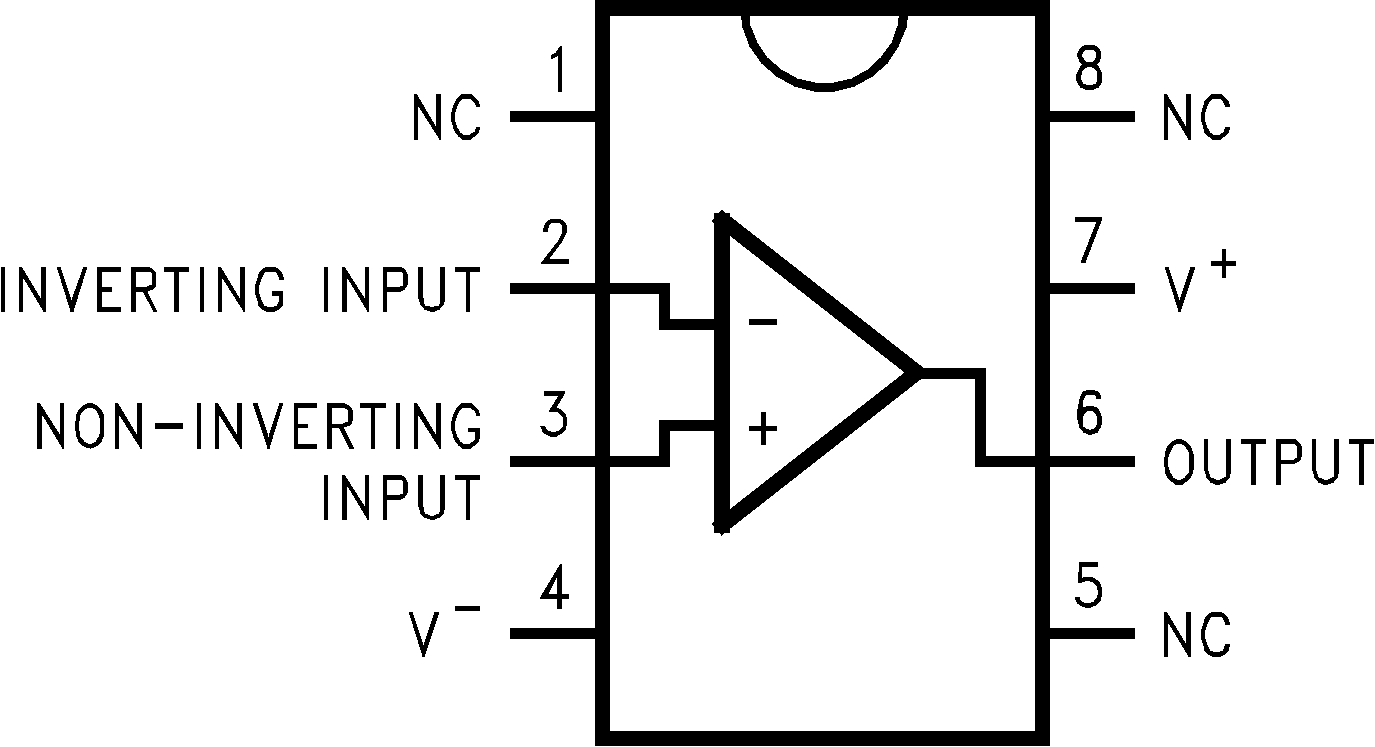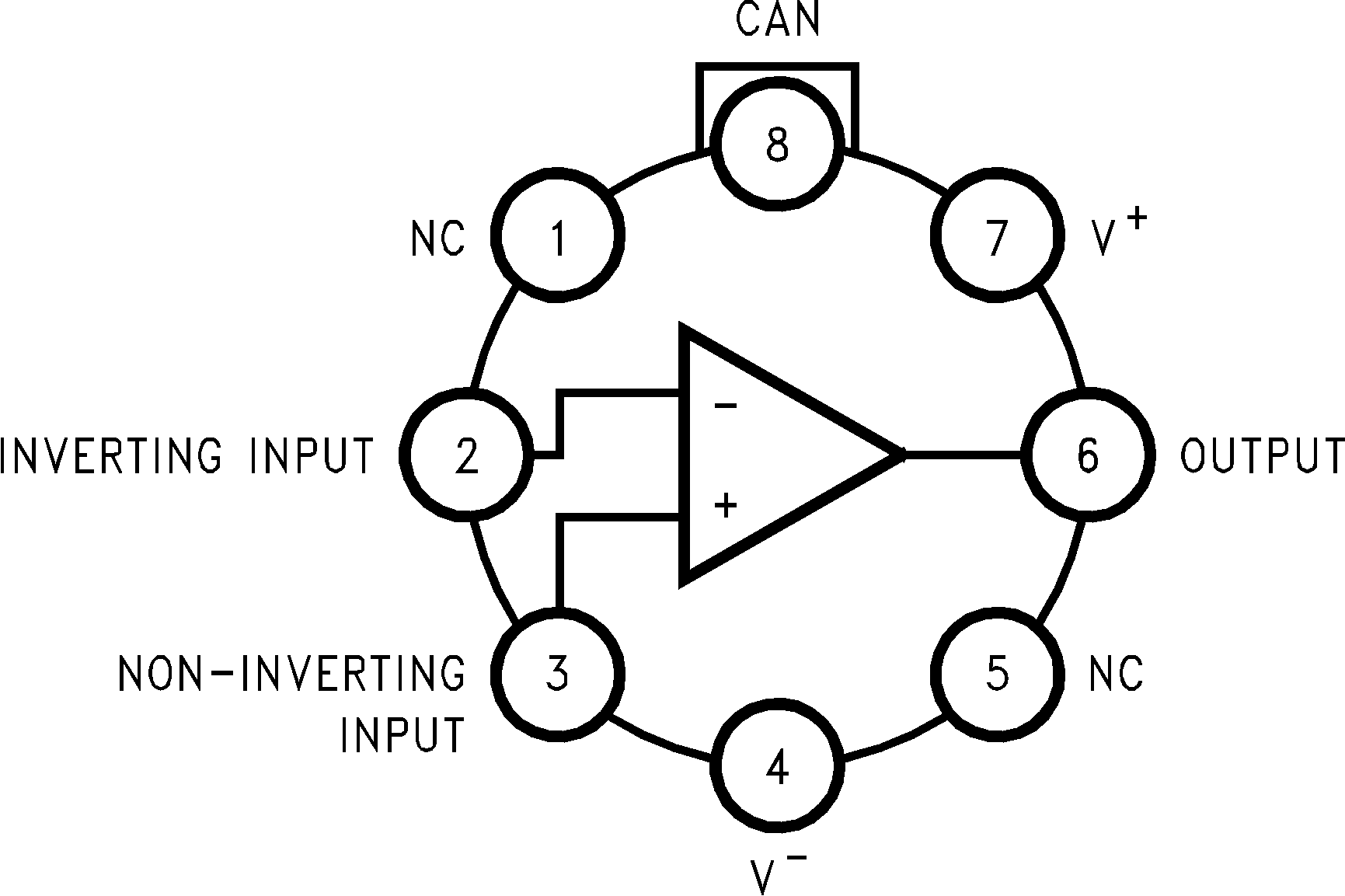SNOSD60 June 2017 LMC6001-MIL
PRODUCTION DATA.
- 1 Features
- 2 Applications
- 3 Description
- 4 Pin Configuration and Functions
- 5 Specifications
- 6 Detailed Description
- 7 Applications and Implementation
- 8 Power Supply Recommendations
- 9 Layout
- 10Device and Documentation Support
- 11Mechanical, Packaging, and Orderable Information
Package Options
Mechanical Data (Package|Pins)
- Y|0
Thermal pad, mechanical data (Package|Pins)
Orderable Information
4 Pin Configuration and Functions
Pin Functions
| PIN | I/O | DESCRIPTION | ||
|---|---|---|---|---|
| NAME | PDIP NO. | TO-99 NO. | ||
| CAN | — | 8 | — | No internal connection; connected to the external casing. |
| +IN | 3 | 3 | I | Noninverting Input |
| –IN | 2 | 2 | I | Inverting Input |
| NC | 1, 5, 8 | 1, 5 | — | No connection |
| OUTPUT | 6 | 6 | O | Output |
| V+ | 7 | 7 | — | Positive (higher) power supply |
| V– | 4 | 4 | — | Negative (lower) power supply |

